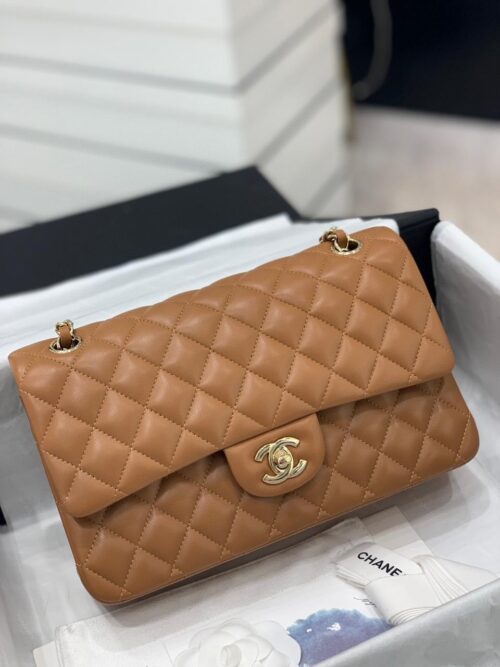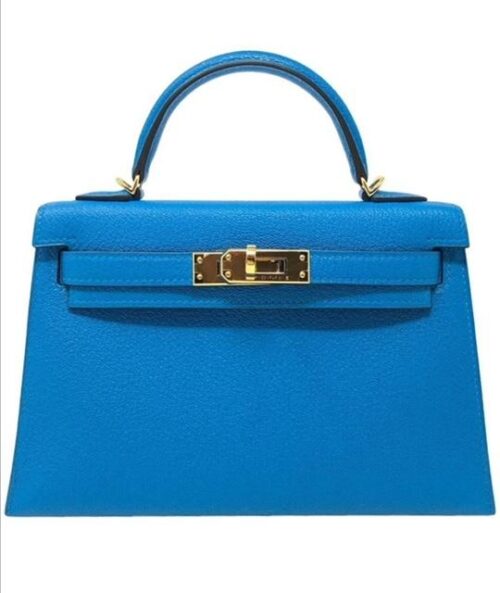Luxury handbags are costly because users are ready to pay the price for a luxurious look. Luxury bag production cost is high because these handbags are made in small numbers with the highest quality materials. They are designed and sewn by expert craftsmen/women without blunders and are as beautifully finished on both sides.
They have proven themselves optically adorable to multiple generations of women. These bags are works of designer craftsmanship and art made to last for decades, if not a lifetime.
5% cost of quality materials and low price but skilled labour, costly to make, expensive to buy, but cover well, hold their value better than most consumer goods.
The finest leather and materials can cost about 30% of the bag’s manufacturing cost, while the labour that goes into crafting the bag accounts for 40% of its cost, roughly $72. Any hardware, logo, or emblem might make up another 25% of the price, or $45.
Why are designer handbags so expensive?
The first thing that comes to mind when addressing why luxury handbags are so expensive is the high-standard material used. From real gold-plated hardware to super-quality leather, premium brands use the best materials when designing handbags.
When it comes to handbags, a brand name can be everything.
Suppose you are going to purchase a handbag, and you want to fit your all-getup with the bag. You will think about a brand name.
How do brands sell designer Luxury bags?
Storied luxury brands invest a period working around their name with dream and expense—the more productive they are, the more coveted their products become.
There’sThere’s also the marketing part. The investment in marketing a brand or bag with a price tag.
Luxury handbags without the markup
We use leather materials and some quality fabric that other premium brands use. We work with the same manufacturers as luxury brands, including Celine and Prada, while avoiding the markup in prices they pass onto customers. We’re not in it for name recognition so that we can give our customers access to the best products at their actual cost.
The reason why designer handbags are so expensive
Most luxury designer bags are handmade. You may look closely at these bags and feel that every stitch is perfectly hand-done and the quality is superb such that the bag lasts a lifetime.
Related Articles:
- What is the psychological explanation behind luxury bags?
- How are luxury bags made?
- Why do luxury bags hold their Value?
- How To Wear a Clutch Bag?
- How To Organize Tote Bags?
Investment and material
Can you think that your luxury bag will rise in value over time?
It’s pervasive to find a classic bag that can resell for more on the secondary market than a year ago. Some people’s extraordinary holdings are a security net for retirement years.
If you think to invest in your luxury bag, it’s not your wrong decision because if you invest, it rises high in the coming new time.
Material and Craftshipment.
You can look carefully at these selected pieces and feel that the bag is perfectly hand-stitched and the quality is impressive such that the bag lasts a long time.
If you love to keep a collection of luxury bags, it’s necessary to know their value and have information about their quality.
Introducing nadinecollection.com, your ultimate destination for luxury bags and accessories. Explore our exquisite collection and discover the craftsmanship behind the iconic Hermes Kelly 25, the epitome of elegance and sophistication. Indulge in the allure of the most expensive Birkin bag, a valid symbol of luxury and status. Immerse yourself in the timeless beauty of the Hermes Birkin 25, meticulously crafted to perfection. Experience the unmatched charm of the Hermes Kelly bags, a fusion of style and functionality. Delve into our selection of Hermes tote bags, combining practicality with a touch of luxury. Adorn yourself with the allure of the Birkin handbag, a statement piece that exudes prestige. Discover the timeless elegance of the Hermes Birkin 30, a classic that never goes out of style. Embrace the allure of the black Birkin bag, a symbol of understated luxury and sophistication. Dive into the world of Hermes Birkin bags and experience the epitome of craftsmanship and luxury. Complete your collection with the iconic Kelly Birkin bag, an exquisite fusion of beauty and refinement. Explore nadinecollection.com today and immerse yourself in the world of luxury bags that define elegance and exclusivity.
Unveiling the Handbag Profit Margin: How Much Does the Industry Make in the USA?
Introduction
The handbag industry has long been associated with luxury, style, and craftsmanship. Handbags remain a lucrative market in the United States, from designer labels to independent brands. As a curious consumer or a budding entrepreneur, you may wonder about the profit margin in this industry. In this article, we will delve into the world of handbags and unveil the profit margins that shape the industry’s financial landscape in the USA.
Understanding the Handbag Profit Margin
The profit margin for handbags can vary significantly depending on various factors, such as brand reputation, manufacturing costs, marketing strategies, and market demand. Industry experts say the profit margin typically ranges from 25% to 50%. However, it is essential to note that these figures are not set in stone and can vary from one brand to another.
Factors Influencing Profit Margin
- Brand Identity and Reputation: Established luxury brands with a strong reputation often command higher profit margins due to their brand equity and customer loyalty. These brands invest heavily in marketing, branding, and creating an aura of exclusivity, allowing them to maintain higher price points and profit margins.
- Manufacturing Costs: The cost of producing handbags plays a crucial role in determining the profit margin. Factors such as raw materials, labor costs, production techniques, and manufacturing location can significantly impact the overall expenses. Luxury brands often prioritize superior craftsmanship, high-quality materials, and meticulous attention to detail, which can increase production costs and justify higher price points and profit margins.
- Distribution Channels: The choice of distribution channels can affect the profit margin. Brands that rely on exclusive retail partnerships or operate their flagship stores have more control over pricing, allowing them to retain a larger share of the profits. On the other hand, brands that distribute through third-party retailers or online platforms may need to share a portion of their revenue as commissions or fees, affecting the overall profit margin.
- Market Demand and Pricing Strategy: The interplay between market demand and pricing strategy is crucial in determining the profit margin. When demand is high and exceeds supply, brands can command premium prices and higher profit margins. Conversely, in a competitive market with lower demand, brands may need to adjust their pricing strategy to maintain market share and profitability.
Industry Insights and Examples
To gain further insights into the handbag profit margin, let’s take a closer look at a few notable examples from the industry:
- Luxury Brands: Renowned luxury brands like Chanel, Hermes, and Louis Vuitton are known for their exquisite craftsmanship and timeless designs. These brands have established themselves as symbols of luxury and exclusivity, allowing them to maintain higher profit margins.
- Contemporary Brands: Contemporary handbag brands, such as Michael Kors and Coach, cater to a broader consumer base by offering accessible luxury. These brands often operate on a larger scale, benefit from economies of scale, and can maintain competitive profit margins.
- Independent Designers: Independent designers and niche brands may operate on a smaller scale but can still achieve healthy profit margins. By targeting specific market segments, leveraging unique designs, and fostering a loyal customer base, independent designers can create a niche market for themselves.
Conclusion
The handbag industry in the USA remains profitable, attracting established luxury brands and emerging designers. While the profit margin for handbags typically ranges from 25% to 50%, it can vary based on several factors, including brand reputation, manufacturing costs, distribution channels, and market demand. By understanding these dynamics and aligning their strategies accordingly, brands can navigate the industry’s competitive landscape and achieve sustainable profitability. Whether you are an aspiring entrepreneur or an avid handbag enthusiast, unveiling the handbag profit margin provides valuable insights into the financial aspect of this thriving industry.







